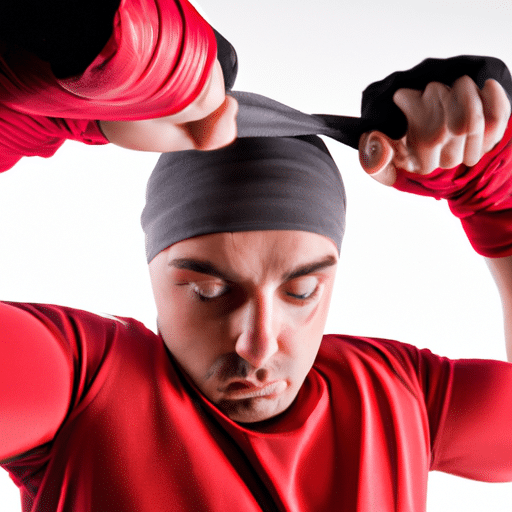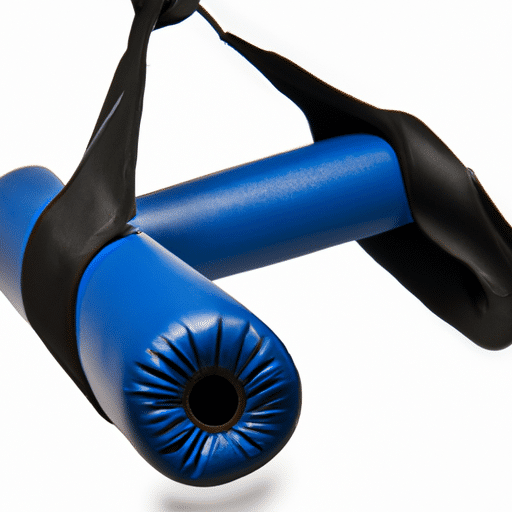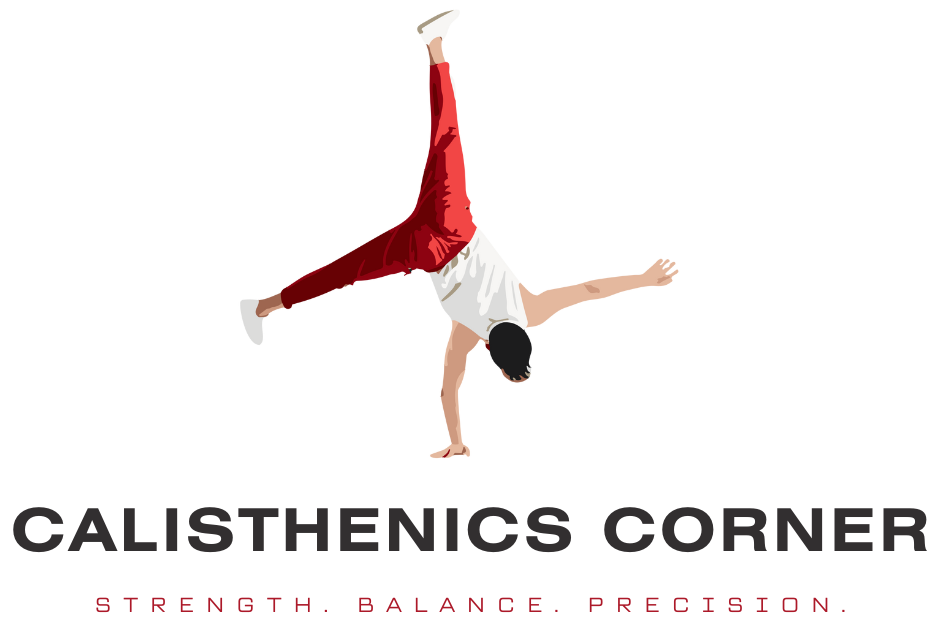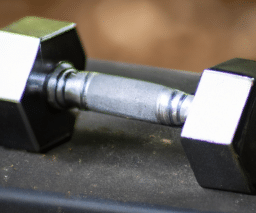If you’re an aspiring boxer looking to improve your performance in the ring, you may have heard about the benefits of calisthenics. But what exactly is calisthenics and how is it connected to boxing? In this article, we will explore the relationship between calisthenics and boxing, and whether incorporating calisthenics exercises into your training routine can help enhance your skills and overall performance in the sport. So, if you’re ready to take your boxing game to the next level, keep reading to find out if calisthenics is the key to unlocking your full potential in the ring.
Benefits of Calisthenics for Boxing
Calisthenics, also known as bodyweight training, offers numerous benefits for boxers of all skill levels. Whether you’re a beginner or a seasoned pro, incorporating calisthenics exercises into your training routine can greatly enhance your overall performance in the ring. Here are some key benefits of calisthenics for boxing:
Improved Strength
One of the primary benefits of calisthenics for boxing is the improvement in overall strength. By performing exercises that utilize your own body weight as resistance, such as push-ups and pull-ups, you can develop functional strength that directly translates to your punches and defensive maneuvers. Calisthenics engages multiple muscle groups simultaneously, helping you build a well-rounded strength foundation that is essential for powerful punches and efficient movement in the ring.
Increased Endurance
Endurance plays a crucial role in boxing, as fights often go the distance and require sustained effort. Calisthenics training can significantly improve your cardiovascular fitness and muscular endurance, allowing you to maintain a high level of performance throughout the duration of a fight. Exercises like squats, lunges, and planks challenge your entire body and help build the stamina necessary to endure grueling rounds in the ring.
Enhanced Flexibility
Flexibility is key in boxing, as it allows you to move with agility and avoid injury. Calisthenics exercises, such as dynamic stretches and mobility drills, can greatly improve your flexibility and range of motion. Through regular calisthenics training, you can increase your joint mobility, improve your muscle elasticity, and enhance your overall flexibility, enabling you to execute punches, slips, and footwork with greater ease and precision.
Improved Balance and Coordination
Maintaining balance and coordination is crucial in boxing to stay on your feet and deliver accurate punches. Calisthenics exercises promote excellent balance and coordination by challenging your body’s ability to stabilize itself. Exercises like planks and lunges require you to engage your core and activate multiple muscle groups simultaneously, improving your overall body control and balance. This, in turn, translates to better footwork, defensive maneuvers, and overall boxing performance.
Types of Calisthenics Exercises for Boxing
When it comes to calisthenics exercises for boxing, there is a wide range of options to choose from. Here are some highly effective calisthenics exercises that can be integrated into your boxing training routine:
Push-ups
Push-ups are a classic calisthenics exercise that targets the chest, shoulders, triceps, and core. They help develop upper body strength, stability, and power, making them an excellent choice for boxing. Variations such as clapping push-ups and one-arm push-ups can further increase the challenge and intensity, allowing you to continually progress and maximize your strength gains.
Pull-ups
Pull-ups are another essential calisthenics exercise that primarily targets the muscles of the back, arms, and shoulders. By incorporating pull-ups into your training routine, you can develop upper body pulling strength and improve your grip, both of which are crucial in boxing. If you’re just starting, you can use resistance bands or assisted pull-up machines to gradually build the necessary strength to perform full bodyweight pull-ups.
Squats
Squats are a fundamental lower body exercise that targets the quadriceps, hamstrings, and glutes. These muscles play a significant role in generating power for punches and footwork. By incorporating squats into your calisthenics routine, you can develop leg strength, stability, and explosive power, all of which are essential for generating strong and efficient movement in the ring.
Lunges
Lunges are excellent for targeting the quadriceps, hamstrings, glutes, and core. They not only build lower body strength and stability but also improve balance and coordination. Lunges can be performed in various directions, such as forward, reverse, and lateral lunges, to target different muscle groups and movements specific to boxing.
Planks
Planks are a highly effective calisthenics exercise for core strength and stability, which are crucial for boxing. By holding a straight arm or forearm plank position for an extended period, you engage your entire core and develop the necessary strength to maintain proper posture and generate power through your punches. Variations like side planks and plank rotations can further challenge and target specific muscle groups.
Burpees
Burpees are a full-body calisthenics exercise that combines strength, endurance, and explosive movements. They involve a series of movements, including a squat, push-up, and jump, which engage multiple muscle groups simultaneously. Burpees are excellent for building cardiovascular fitness, muscular endurance, and functional strength, making them a perfect addition to any boxing training routine.
Calisthenics vs Weightlifting for Boxing
While weightlifting is a common training method in many sports, including boxing, calisthenics offers unique advantages specifically tailored to the demands of the sport. Here’s a comparison between calisthenics and weightlifting in the context of boxing:
Functional Strength
Calisthenics is known for developing functional strength, which is critical in boxing. The exercises mimic natural movements and engage multiple muscle groups simultaneously, helping you develop strength that directly translates to your performance in the ring. In contrast, weightlifting often isolates specific muscles, which may not fully enhance the functional strength required for boxing movements.
Muscle Imbalances
Calisthenics exercises work the body as a whole, ensuring balanced muscle development. This is crucial in boxing, as muscle imbalances can lead to inefficient movement patterns and increased risk of injury. Weightlifting, on the other hand, may place more emphasis on isolated muscle groups, potentially leading to muscle imbalances if not carefully programmed and balanced with other exercises.
Injury Risk
When performed with proper form and technique, calisthenics exercises have a lower risk of injury compared to weightlifting. Since calisthenics primarily utilize bodyweight as resistance, the risk of lifting heavy weights and potential accidents associated with weightlifting is minimized. Additionally, calisthenics promotes functional movement patterns and joint mobility, which can aid in injury prevention in the dynamic movements required in boxing.
Training Convenience
Calisthenics requires minimal equipment and can be performed anywhere, making it highly convenient for boxers. With calisthenics, you can effectively train your entire body without the need for a gym or expensive equipment. Weightlifting, on the other hand, often requires access to specialized equipment and facilities, which may be less accessible or less convenient for some boxers.
Incorporating Calisthenics into Boxing Training
Now that we understand the benefits of calisthenics for boxing and the different types of exercises available, let’s explore how to incorporate calisthenics into your boxing training routine.
Warm-up Exercises
Calisthenics exercises make for an excellent warm-up before your boxing training session. Dynamic stretches such as arm circles, leg swings, and trunk rotations can help increase blood flow, warm up the muscles, and improve joint mobility. Include calisthenics exercises like jumping jacks, bodyweight squats, and push-ups in your warm-up routine to gradually increase intensity and prepare your body for the upcoming boxing drills.
Integration in Boxing Drills
Incorporate calisthenics exercises within your boxing drills to enhance the intensity and challenge of your training sessions. For example, between rounds of heavy bag work, perform sets of bodyweight squats or lunges to maintain an elevated heart rate and continue working your lower body. During shadow boxing, incorporate push-ups or burpees during short rest intervals to engage your upper body and maintain an overall high-intensity workout.
Circuit Training
Another effective way to incorporate calisthenics into your boxing training routine is through circuit training. Create a circuit of various calisthenics exercises, such as push-ups, pull-ups, squats, lunges, planks, and burpees, and perform each exercise for a set amount of time or repetitions. Rest minimally between exercises, aiming to maintain a high level of intensity throughout the circuit. Circuit training not only improves muscular endurance but also simulates the demands of boxing rounds.
Enhancing Agility and Footwork
Agility and footwork are essential components of boxing, allowing you to move swiftly, change directions, and avoid your opponent’s punches. Calisthenics exercises can greatly enhance your agility and footwork when incorporated into your training routine. Here are some key exercises to focus on:
Jumping Exercises
Boxers rely heavily on explosive leg power and quick feet. Jumping exercises such as squat jumps, tuck jumps, and box jumps can greatly enhance your vertical jump height, leg power, and reactive speed. Include these exercises in your calisthenics routine to develop explosive power in your legs and improve your ability to swiftly evade attacks and move around the ring.
Ladder Drills
Ladder drills are excellent for improving footwork, speed, and coordination. Set up an agility ladder on the ground and perform various drills such as high knees, ladder hops, lateral shuffles, and quick feet. These drills challenge your foot speed, agility, and coordination, helping you become more elusive and agile in the ring. Incorporate ladder drills into your calisthenics training or use them as a standalone footwork session.
Skipping Rope
Skipping rope is a classic exercise that boxers have been using for decades to enhance their footwork, coordination, and cardiovascular endurance. Jumping rope can be incorporated into your calisthenics routine as a warm-up exercise or as a standalone training session. Aim to vary the intensity, speed, and footwork patterns while skipping rope to keep challenging yourself and improve your overall agility and footwork.
Calisthenics for Injury Prevention
Injury prevention is crucial in any sport, and boxing is no exception. Calisthenics exercises can greatly contribute to injury prevention by strengthening key areas, improving mobility, and enhancing body control and stability. Here are some important aspects of injury prevention that calisthenics can address:
Core Strengthening
A strong and stable core is essential for generating power, maintaining proper posture, and protecting your spine during boxing movements. Calisthenics exercises such as planks, side planks, Russian twists, and leg raises can target your core muscles effectively. Include these exercises in your training routine to develop a solid core foundation and reduce the risk of lower back pain and other related injuries.
Mobility Exercises
Good flexibility and joint mobility are vital for executing punches, defensive maneuvers, and quick transitions in boxing. Calisthenics exercises like dynamic stretches, mobility drills, and yoga-inspired movements can greatly improve your overall mobility and range of motion. Focus on exercises that target your shoulders, hips, and ankles, as these areas are particularly important for boxing movements.
Body Control and Stability
Calisthenics exercises that challenge your balance and stability, such as one-legged squats, pistol squats, and single-leg deadlifts, can greatly enhance your overall body control and stability. These exercises require you to engage your core, activate stabilizer muscles, and improve joint proprioception. Better body control and stability can help prevent injuries and allow you to remain balanced and effective while executing punches and defensive maneuvers.

Avoiding Overtraining and Balancing Workouts
Overtraining can lead to a decline in performance, injuries, and mental burnout. To optimize your training and avoid overtraining, it’s essential to implement proper programming, rest, and recovery. Here are some ways to avoid overtraining and balance your workouts:
Periodization
Periodization is the systematic planning of your training program to ensure proper progression, avoid plateaus, and prevent overtraining. By dividing your training into distinct phases focused on different aspects of fitness, such as strength, endurance, and power, you can optimize your progress and prevent overtraining. Incorporate periods of active recovery and lower-intensity training to allow your body to regenerate and adapt.
Rest and Recovery
Adequate rest and recovery are crucial for optimal performance and injury prevention. Make sure to include rest days in your training program to allow your body to recover and adapt to the training stress. During rest days, focus on activities that promote active recovery, such as light stretching, mobility exercises, and foam rolling. Additionally, prioritize quality sleep to support recovery and rejuvenation.
Avoiding Plateaus
To prevent plateaus and keep your training dynamic, continuously challenge yourself and vary your calisthenics exercises. Vary the intensity, repetitions, sets, and even exercise variations to keep your body adapting. Consider incorporating higher-intensity workouts, interval training, or adding new calisthenics exercises to challenge different muscle groups and movement patterns. This variation and progression will help you break through plateaus and avoid stagnation.
Maximizing Performance with Calisthenics
Calisthenics training can be specifically tailored to maximize various aspects of performance in boxing. Here are some ways to use calisthenics to optimize your performance:
Explosive Power
Explosive power in boxing is crucial for generating knockout punches and quick movements. Plyometric exercises such as box jumps, clap push-ups, and explosive squats can greatly enhance your explosive power. Incorporate these exercises into your training routine to develop fast-twitch muscle fibers and improve your ability to generate powerful punches and swift movements in the ring.
Speed Training
Speed is a highly desirable attribute in boxing, allowing you to land punches faster and react quicker to your opponent’s attacks. Calisthenics exercises can be tailored to improve your speed, such as performing explosive sprints, quick feet ladder drills, or rapid-fire punches on a speed bag. Incorporate these exercises into your training routine to develop explosive speed and enhance your overall boxing performance.
Plyometric Exercises
Plyometric exercises involve rapid stretching and contracting of muscles, promoting power and explosiveness. Exercises like jump squats, plyometric push-ups, and bounding can greatly enhance your overall athletic performance in boxing. Incorporate plyometric exercises into your calisthenics routine to develop power, speed, and coordination, giving you an advantage in the ring.

Calisthenics for Mental Toughness
Boxing requires not only physical fitness but also mental toughness. Calisthenics can be a valuable tool in building mental strength and resilience. Here’s how calisthenics can contribute to your mental toughness:
Building Discipline
Consistently performing calisthenics exercises requires discipline, commitment, and mental resilience. Pushing through challenging workouts, maintaining proper form, and steadily progressing in strength and endurance all contribute to building discipline and mental toughness. By incorporating calisthenics into your training routine, you develop a strong work ethic that translates to your boxing performance and mental resilience in the face of challenges.
Developing Focus
During calisthenics exercises, maintaining proper form and executing movements with precision require focus and concentration. By regularly engaging in calisthenics, you can develop and enhance your ability to stay focused and present in the moment. This mental focus translates directly to your boxing training and performance, enabling you to react swiftly to your opponent’s actions and execute your game plan effectively.
Handling Fatigue
Boxing can be physically demanding and exhausting, requiring you to fight through fatigue. Calisthenics exercises, which challenge your muscular endurance and cardiovascular fitness, can simulate the fatigue experienced during boxing matches. By repeatedly pushing through fatigue during calisthenics training, you develop mental fortitude and the ability to keep pushing forward even when your body feels tired and fatigued.
Benefits of Bodyweight Training for Boxing
Calisthenics, or bodyweight training, offers numerous benefits for boxing. Here are some additional advantages of incorporating calisthenics into your boxing training routine:
Cost-Effectiveness
Calisthenics requires minimal to no equipment, making it a cost-effective training method for boxers. With just your bodyweight, you can perform a wide variety of exercises that target different muscle groups and fitness components. This eliminates the need for expensive gym memberships or specialized equipment, allowing you to train effectively anywhere, anytime.
Minimal Equipment Required
As mentioned earlier, calisthenics can be performed without the need for any equipment. This makes it highly accessible and convenient, especially for boxers who may not have access to a fully equipped gym. With calisthenics, you can build strength, endurance, and mobility with just your bodyweight, making it a highly practical training method for boxers.
Versatility
Calisthenics offers a wide range of exercises that can be tailored to meet the specific needs of boxing. Whether you’re focusing on strength, endurance, flexibility, agility, or power, calisthenics exercises can be modified to target the specific fitness components required in boxing. This versatility allows you to create a well-rounded training routine that addresses all aspects of your boxing performance.
In conclusion, calisthenics is an excellent training method for boxers of all levels. It offers numerous benefits, including improved strength, increased endurance, enhanced flexibility, improved balance and coordination, and injury prevention. By incorporating calisthenics exercises into your training routine, you can enhance your overall boxing performance, maximize your physical capabilities, and develop the mental toughness needed to excel in the ring. So, lace up your gloves, embrace the power of bodyweight training, and unlock your full potential as a boxer.








